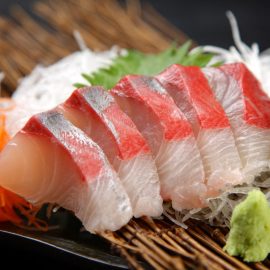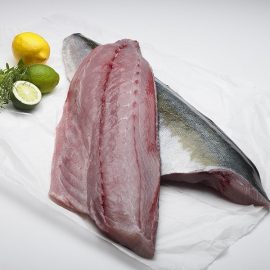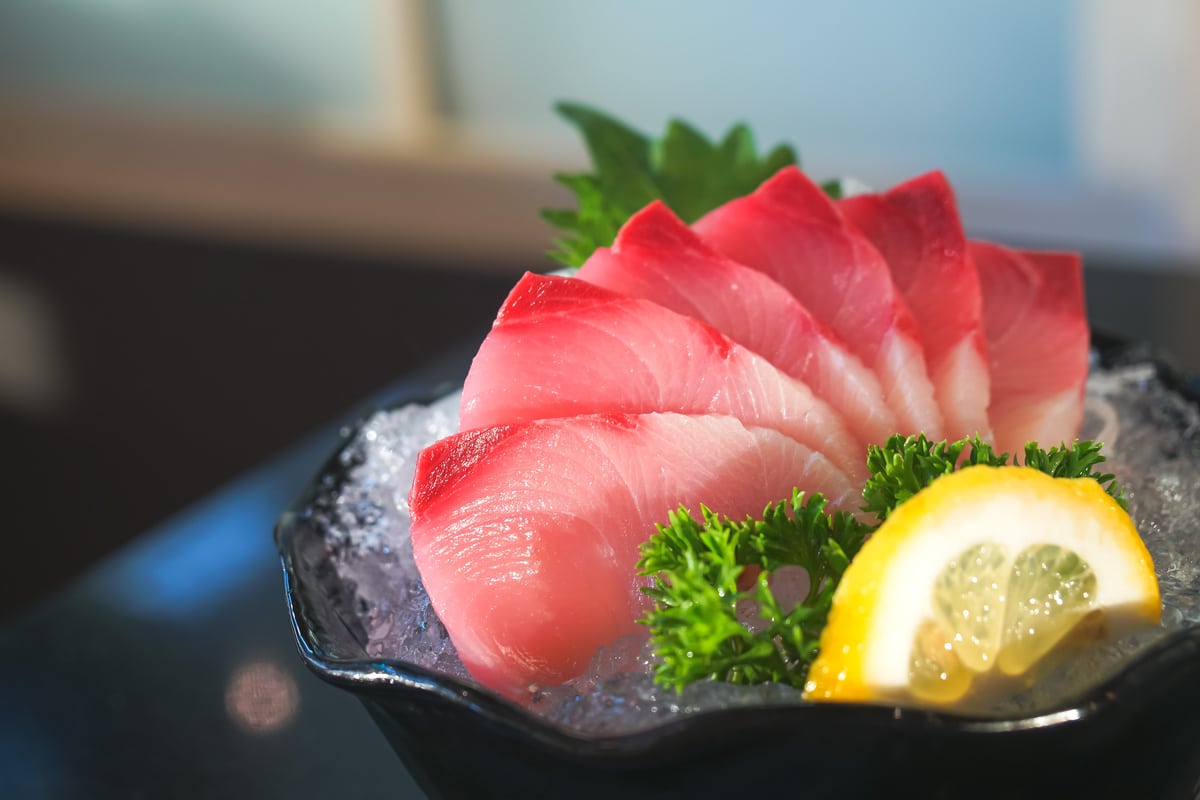
Introduction
Hamachi is a widely used seafood used in sushi dishes or grilled. Japanese people regard it as an indulgence and call it by different names based on its size. The most common time of year for Japanese households to prepare is winter. They are popular in the colder months when the meat is higher in fat and can be eaten either raw or cooked. A popular wintertime yellowtail is called buri or Kan-Buri and is also popular as special seasonal cuisine.
It is presented on menus as yellowfin tuna; however, it is part of another family, the Carangidae, not the Scombridae, which includes bonitos, mackerels, and tunas.
The Japanese market has been the major consumer of this species. However, it is becoming increasingly popular among other countries worldwide due to its delicate flavour and texture when appropriately prepared.
Description & Characteristics
Hamachi, also known as the yellowtail amberjack or the Japanese amberjack, is a marine fish in the Indo-Pacific region. It belongs to the family Carangidae and is a popular target for commercial and recreational anglers.
Hamachi is a large fish with a slim body and can grow to lengths of up to 100 cm (39 inches) and weigh up to 15 kg (33 lb). They have prominent yellow stripes along their sides and bright yellow fins that give them their characteristic “yellowtail” look. The colouration fades with age, but they retain the distinctive pattern even into adulthood. Their head is relatively small compared to the rest of their body, giving them a sleek appearance.
Their heads feature large eyes and terminal mouths with small teeth for crushing prey such as crustaceans, molluscs, and small fishes. As with many other carangids, they are voracious predators that can be found in shallow coastal waters and nearshore reefs, where they hunt for smaller prey items.
Hamachi is considered a fast swimmer and has been observed making long-distance migrations in search of food or mates. In some parts of its range, it has been identified as an essential part of the local ecosystem, serving as prey and predator for many species. It is also highly sought after by commercial fisheries due to its large size and high market value.
Species And Taxonomy
The Hamachi, also known as the yellowtail amberjack, is a ray-finned fish belonging to the family Carangidae. Native to the Western Pacific and Indian Oceans, it is widely distributed in tropical and temperate waters from Japan to Australia.
This species has been identified by taxonomists as Seriola lalandi and is sometimes referred to as the Japanese yellowtail.
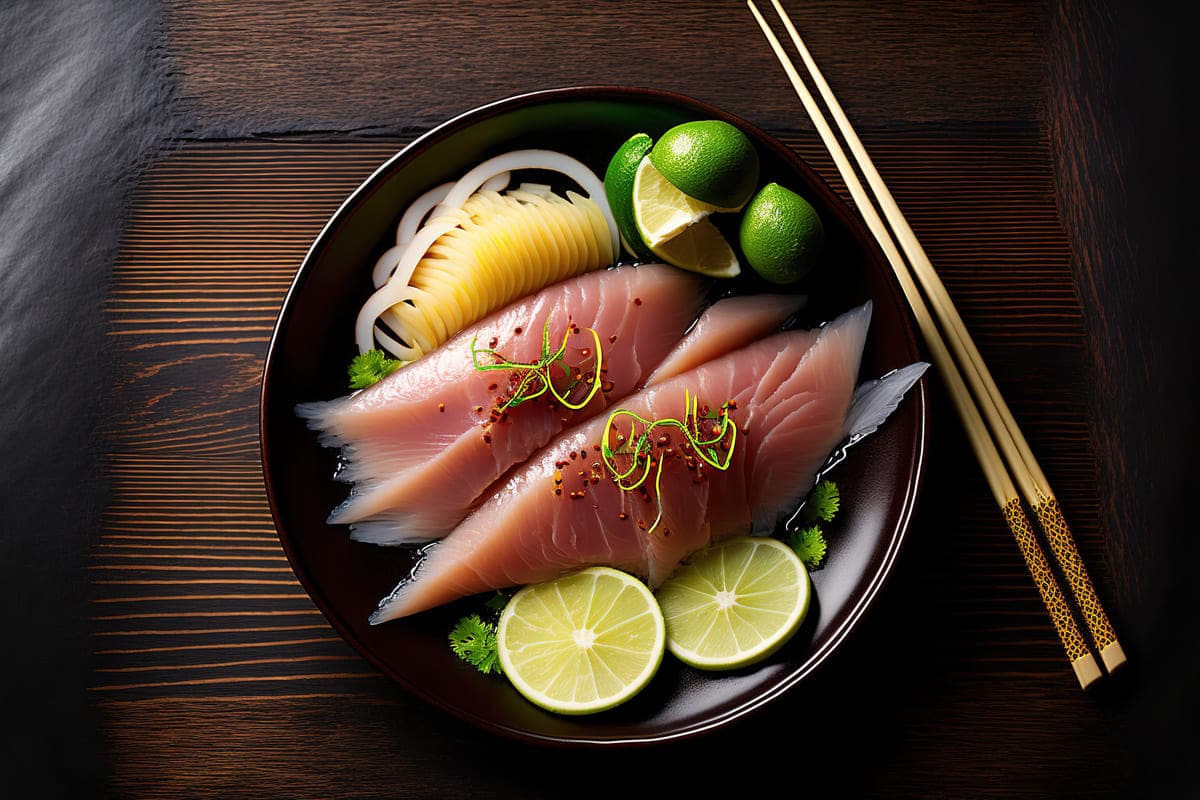
Etymology
The etymology of the term ‘Hamachi’ is interesting, as it can be traced back to two distinct sources. In Japanese, the word ‘hamachi’ (ハマチ) means ‘buri’ or yellowtail amberjack, a type of fish found in Japan that was once a popular food source. This term has also been associated with the word ‘hamakaze’ (浜風), which translates to ‘seaside wind’ and evokes images of the waves lapping against the shore. Coincidentally, these words are used in the titles of various video games and anime series, further solidifying their connection.
Habitat And Distribution
Hamachi, also known as yellowtail, is a fish in the Indo-Pacific region. It is distributed widely throughout the coastal areas and offshore waters of Japan, China, Korea, and New Zealand.
According to the Food and Agriculture Organization of the United Nations (FAO), global catches of hamachi were estimated at over 25,000 tons in 2018.
The habitats of hamachi vary depending on its life cycle stage. The young yellowtail hamachi is typically found in coastal waters near coral reefs or estuaries, while adult fish inhabit deeper waters near the continental shelf.
Hamachi is also adapted for living in brackish and marine waters and may even enter freshwater rivers to spawn. The species is highly migratory and can travel hundreds of kilometres between breeding sites and feeding grounds.
Hamachi’s Diet
The diet of a hamachi can vary depending on its age and habitat. Juveniles feed mainly on small crustaceans such as copepods and mysids; adults feed primarily on planktonic organisms such as krill, copepods, and molluscs. In addition to these foods, adult hamachi will occasionally feed on fish eggs or other small fish if available. To maximise their energy intake while minimising predation risk, adult hamachi often form large schools that travel together to find suitable food sources.
Hamachi’s diet plays a vital role in its life cycle by helping it maintain health and reproduce successfully. Adult hamachi may also benefit from feeding on certain types of zooplankton due to the presence of carotenoids which can help boost fertility rate when consumed. As such, hamachi must be able to recognise food sources containing these carotenoids to maximise reproductive success.
Life Cycle of Hamachi
Like all organisms, it goes through successive stages of growth and development before reaching maturity. During the spawning season, adult hamachi congregates around seagrass beds and release their eggs which are then fertilised by sperm released by males simultaneously.
After fertilisation, the eggs float toward the surface, where hatchlings eventually emerge about a week later. The cycle then starts again with these new hatchlings drifting in ocean currents waiting for suitable habitats before settling down and starting their life cycles.
As they reach adulthood, they migrate to deeper waters, breeding and spawning year-round. In terms of reproduction, hamachi becomes sexually mature around two years old when they reach a length of 18–20 cm (7–8 inches).
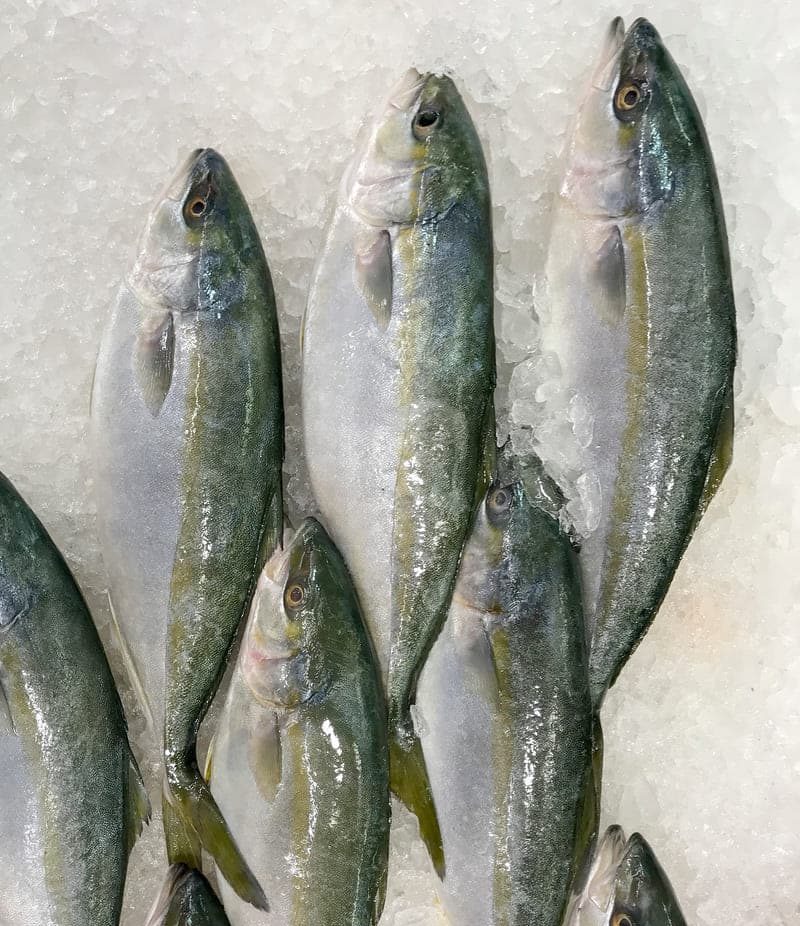
Hamachi Fisheries
Hamachi, also known as yellowtail amberjack, is an important farmed fish species for fisheries worldwide. It is found in the Pacific Ocean and the Indian Ocean and can reach sizes of up to 6 feet (1.8 m). The fish’s mild flavour makes it popular among chefs and diners.
The name “Hamachi” comes from a Japanese term meaning “upper river fish,” which reflects the presence of wild hamachi in coastal waters near rivers. It is an important commercial fishery species throughout its range, with over 1 million metric tons of this fish harvested yearly.
In the western Pacific, hamachi is highly valued by recreational and commercial fishers due to its high value in international markets and its reputation as a sushi-grade fish. Hamachi is also caught and farmed in Japan, where it has been a staple food source for centuries. In recent years, Japan has become one of the leading producers of farmed hamachi.
The species supports both subsistence and targeted fisheries throughout its range. It is targeted by artisanal fishers who use handlines, gillnets, longlines, traps, seines, and trawls. Subsistence fishing occurs mainly in coastal areas where individuals target small schools of hamachi with hook-and-line gear or spears.
Sustainability
Hamachi, also known as yellowtail amberjack, is an integral species in fisheries across the globe. They are a highly sought-after fish due to their excellent flavour and texture, making them a popular choice for sushi and sashimi. However, with the increasing demand for this fish, there are questions about the sustainability of hamachi populations.
In Japan, where hamachi is most abundant and popular, overfishing has been identified as a significant threat to its sustainability. In fact, according to some estimates, more than 85% of all hamachi caught in Japanese waters have been taken from unsustainable sources. This has led to concerns about its long-term viability as a sustainable food source. Additionally, many other countries with high fishing activity levels have also observed similar declines in local hamachi populations due to overfishing.
Fortunately, several steps can be taken to ensure the sustainability of hamachi fishing worldwide. For example, governments could implement catch limits or quotas to reduce pressure on wild stocks. Additionally, fishermen could use more selective gear and methods to reduce bycatch and increase selectivity when targeting hamachi. Lastly, better regulation of aquaculture operations could help ensure that farmed stocks remain healthy and well-managed while avoiding potential environmental impacts associated with large-scale fish farming operations.
In a world where we still recognise the importance of hamachi fishing as an integral part of our global seafood supply chain, it could be possible to maintain sustainable levels of hamachi fishing worldwide by taking these measures now.
Hamachi As Food
Hamachi is highly prized in Japan for its flavour, texture and fatty fish skin. The flesh of hamachi is light pink to yellowish-orange in colour, with a mild sweet taste. It is high in omega-3 fatty acids and has a high oil content, making it suitable for grilling or deep frying.
Hamachi can be prepared in various ways, such as sashimi, sushi, grilled or steamed. Some chefs may marinate the fish before cooking it over charcoal to enhance its flavour. For those who prefer to avoid cooking their hamachi, many ready-made dishes are available featuring this delicious fish.
In Japan, popular dishes include teppanyaki (grilled), tataki (lightly seared) and sashimi. Hamachi can also be served raw as sashimi, sushi rolls, and nigiri slices. Its mild flavour makes it an excellent complement to Japanese sauces such as ponzu or teriyaki glaze.
In addition to its culinary uses, hamachi is also used for traditional medicinal purposes in some East Asia. In Chinese medicine, it is believed that consuming hamachi can help improve overall health and well-being by strengthening the immune system and aiding digestion. It is eaten raw with ginseng root to promote longevity and general wellness in Korea.
Whatever way you decide to prepare this versatile fish – whether cooked or raw – you’re sure to enjoy its unique flavour profile and health benefits!
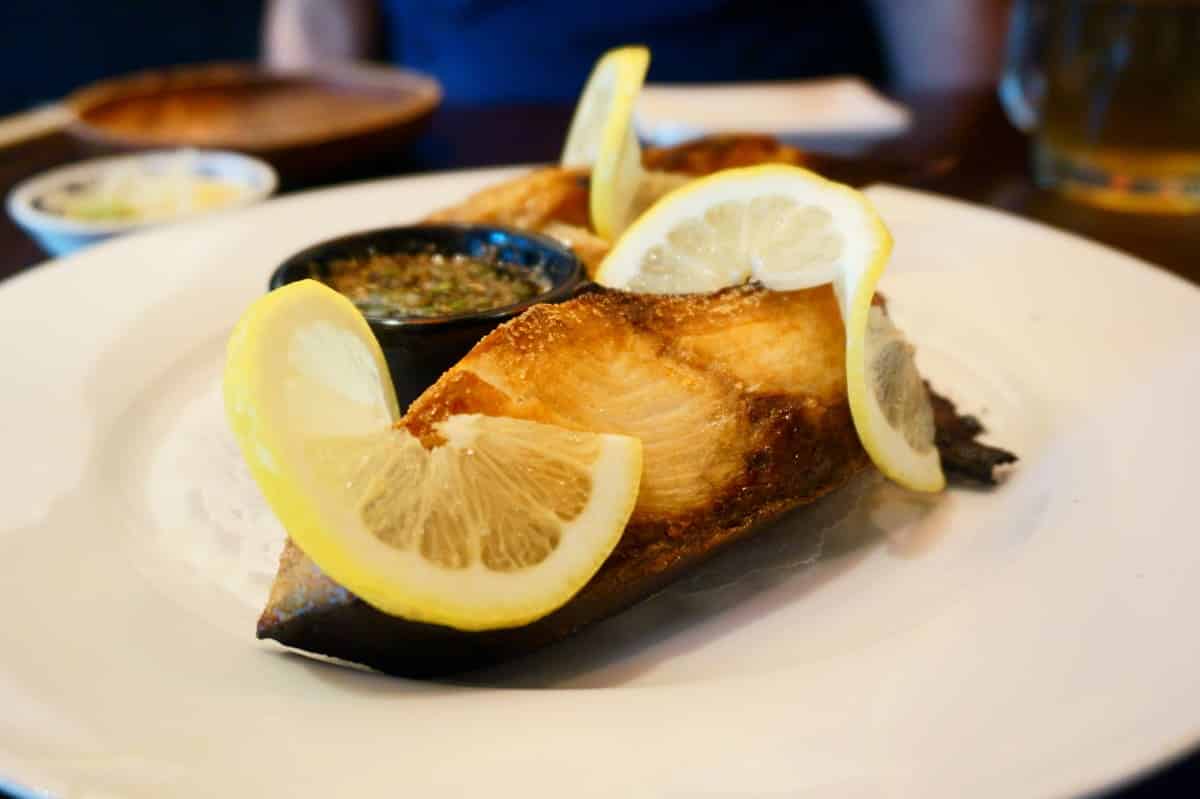
How To Prepare Hamachi
Preparing delicious Hamachi is an art form, requiring a delicate balance of spices and ingredients to arrive at the perfect flavour. To master this culinary craft, one must first understand how to prepare this delectable fish properly.
Here are some tips and guidelines for preparing a succulent dish of Hamachi:
- Use fresh, well-sourced fish: This is essential to ensure your dish comes out perfectly. Make sure you buy from a reputable seafood supplier who can guarantee the quality of their product.
- Clean and cut the fish appropriately: Remove any scales or unwanted particles from the surface of the fish before cutting it into thin slices for cooking. It’s best to use a sharp knife for this step as it will provide more accurate results.
- Marinate with spices: Choose a marinade that complements the taste of hamachi, such as soy sauce, garlic, ginger, and sesame oil. Allow the fish to soak up these flavours overnight before proceeding with cooking.
- Pan-sear or grill: For best results, use high heat when pan-searing or grilling your hamachi. This will create a nice crisp outer layer while keeping the inside juicy and tender.
- Serve with accompaniments: Sliced cucumbers, pickled ginger, wasabi paste, and soy sauce make excellent side dishes for hamachi. These additions will bring out its unique flavour and make for an unforgettable meal experience.
From sourcing to seasoning and cooking techniques – getting each step right is essential for creating an exquisite dish of Hamachi that will tantalise taste buds everywhere. With these tips in mind, anyone can master the art of preparing Hamachi like a professional chef!
Best Side Dishes Paired With Hamachi
Hamachi is a type of fish, and it is renowned for its delicate taste and texture. It has become increasingly popular in recent years due to the rising popularity of sushi and sashimi. One must know what side dishes are best paired with hamachi to bring out its flavour. From savoury sauces to crisp salads, there are plenty of delicious options when serving hamachi.
Savoury sauces are a great way to enhance the flavour of hamachi. Soy sauce, ginger-garlic sauce, teriyaki sauce, and ponzu are all good choices for pairing with this fish. These sauces add a layer of complex flavour that complements the subtle taste of hamachi beautifully. Additionally, they provide moisture that helps keep the fish moist and juicy when cooked or served raw as sushi or sashimi.
Salads are another popular option for pairing with hamachi. A typical salad might include leafy greens like arugula or romaine lettuce, tomatoes, cucumbers, daikon radish, carrots, avocados, and other ingredients. The bright flavours and crunchy textures make salads a perfect accompaniment to hamachi’s delicate flavour profile.
The option of seaweed salads and cole slaws can be made with shredded cabbage or kale and garnished with flavorful dressings such as miso-ginger vinaigrette or creamy avocado-lime dressing for something more interesting than a traditional salad.
No matter what side dish you pair with your hamachi meal, it will likely be an enjoyable experience for everyone involved! With careful consideration given to choosing complementary flavours and textures, you can make any meal featuring this fish memorable and delicious.
Popular Hamachi Recipes
Popular recipes for hamachi include teriyaki, steamed, and deep-fried varieties. Teriyaki hamachi is prepared by marinating slices of the fish in a mixture of soy sauce, sugar, sake, and mirin (sweetened rice wine) before grilling or broiling.
Steamed hamachi is often cooked with vegetables such as carrots and onions or served with oyster sauce or ponzu (citrus-flavoured soy sauce). Deep-fried hamachi is usually coated in tempura batter before deep-fried until golden brown.
Hamachi can also be used in ceviche recipes, marinated overnight in lime juice to cook it through acidity. Other recipes call for cooking cured slices of hamachi over hot coals on skewers.
Japanese cuisine uses yellowtail in many dishes. Raw or cooked, you can find them in many forms. Here are the most common Hamachi dishes:
- Yellowtail sushi – There is no better synonym for sushi than hamachi. Yellowtail sushi can also be prepared in a few different ways.
- Hamachi maki – The term makizushi refers to rolled sushi. There are many maki rolls, from small to large, individually moved to bamboo mats, but all include sushi rice and toppings encased in nori seaweed. The buttery flavour of hamachi is perfectly complemented by scallion in hamachi maki rolls.
- Hamachi nigiri – Hamachi nigiri is one of the best sushi dishes. There is nothing fancy about it; it’s simply sushi rice topped with a slice of raw yellowtail atop it. Often, rice and fish are topped with wasabi. A traditional way to eat nigiri is to use your hands. Soy sauce is best used on fish, not rice. Too much soy sauce will be absorbed if the rice is dipped in soy sauce.
- Hamachi donburi – In Japanese, donburi translates to “bowl,” but it can also refer to rice bowls as a whole. Japanese dishes like this can be made with meat, seafood, vegetables, and eggs seasoned with various flavours and served over plain steamed white rice. Donburi can be served with cooked or raw fish.
- Negihama – It is called negihama when negi or scallion is paired with hamachi. In a food processor, mince the yellowtail and the scallions until they are finely chopped. A type of maki sushi, negihama is commonly found in Japanese cuisine. Even the chef may be able to perform it as a gunkanmaki with a little effort. A seaweed wrap surrounds the rice in nigiri like this. The seaweed secures the negi hamachi.
- Yellowtail sashimi – In its simplest form, hamachi sashimi consists of thin slices of yellowtail. Garnishes typically served under fish include daikon, cucumbers, or shiso leaves. The health benefits of sashimi are slightly more significant than those of sushi. Since rice isn’t present, as well as the low sodium and sugar content in sushi vinegar.
- Hamachi jalapeno – There is a growing trend in the US to combine yellowtail sashimi with jalapeno slices. A soy and citrus sauce called ponzu is commonly poured over the top of the dish. Besides being rich, spicy, and fatty, this appetiser is also citrusy and savoury.
- Hamachi kama – Yellowtail collars, or cheeks, are called hamachi kama. There’s nothing better than salt-grilled food. The winter yellowtail collar does not constitute sushi, yet it can be found at many sushi restaurants, sushi bars, and sake bars.
Whichever recipe you choose for your next meal in a sushi bar featuring this delicious fish, you will surely enjoy its unique flavour and texture.
Comparison To Other Fish
Comparatively, yellowtail hamachi is often compared to other species, such as yellowtail kingfish (Seriola lalandi), yellowtail amberjack (Seriola quinqueradiata) and almaco jack (Seriola rivoliana). Examine their morphological characteristics to understand the differences between these fish species.
Anachronism: While hamachi may be lesser-known than other fish species, this doesn’t take away from the unique qualities that make it stand out.
Hamachi typically grows larger than the other fish mentioned, with individuals reaching up to 60 inches in length. Its body shape is also different, with a short snout and rounded head, while the others tend to have longer snouts and sharper heads.
Additionally, hamachi’s scales are noticeably smaller than those of yellowtail kingfish or almaco jack which can reach up to 1 centimetre in size. Lastly, hamachi’s colouration is more distinct than the other species since it has a dark olive-green colouring on its back, fading into a pale yellow on its sides and belly area.
In terms of taste, Hamachi has a milder flavour than most other fish species mentioned above, making it an ideal choice for sushi or sashimi dishes. Furthermore, due to its firm texture and high-fat content, hamachi can withstand cooking at higher temperatures without becoming too dry or tough, which makes it perfect for grilling or pan-frying. However, it should be noted that hamachi tends to be more expensive when sold commercially because of its higher fat content than other fish species, such as cod or halibut.
Although hamachi may not be as well known as some other fish mentioned above due to its limited availability in certain areas, its unique qualities make it an excellent choice for those looking for something different when dining seafood dishes.
Conclusion
With its delicious taste and long lifespan, Hamachi can be a great addition to any meal! With proper storage and handling techniques, this delectable seafood treat will tantalise your taste buds with its unique flavour – an absolute delight for royalty!
